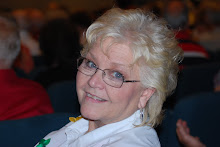

Skip and grandson, Chandler just sitting Skip, Troy and Kyle unloading the bikes One of our tent campsites. We had two
and talking...one of the beauties of right next to each other. Lots of room.
camping...you have time to talk.
Mid-March blew in blustery and cool just like it always does in west Texas. We loaded our trusty little chalet, the kids arrived with their cars and pickups loaded down with their tents, bicycles and all their camping gear, and we headed west into Indian Territory!
Really, during the early to mid 1800's this part of Texas was the home to some of the most savage Indian tribes in the country...the Commanche. They created havoc all over the plains and into central Texas and Mexico. They robbed and pillaged and murdered and kidnapped. They were feared by all, even other Indian tribes. Before you go to this part of the country, you really should pick up some books or other reading material about Quanah Parker, the last great Indian Chief and the son of Chief Peta Nocona and Cynthia Ann Parker. Cynthia Ann Parker was a white captive who was captured by the Commanche at the age of eight when the Indians raided her father's fort near current Mexia, Texas. She grew up as an Indian and later married Peta Nocona who would become the war chief of the Nocone Commanches. They had three children, two boys Quanah, and Pecos and one girl Topasannah. Their story is one of the great stories of Texas history and the American West. Cynthia and her daughter were eventually captured and returned to the Parker Family where they remained unwillingly for the rest of their lives. Topasannah became ill and died and Cynthia in her grieving starved herself to death. The place where the Texas Rangers and soldiers under the command of Sul Ross killed many Indians and captured Cynthia Ann and her daughter was on the Pease River not far from the town that would eventually bear his name, Quanah, Texas. This all happened in the area of Texas that you travel while getting to Caprock Canyons from the east-north east.
After his mother's capture, Quanah was taken in by the Quahadi Commanches (the original tribe of his father). They were known as the most warlike of all the Commanches and Quannah who had vowed vengence on the white man was one of their most feared warriors and later became the war chief of the Quahadis. They terrorized the frontier for years while being pursued by the US Army. They were never captured, but their number grew smaller and with the loss of the massive buffalo herds which were their life line, they finally gave up and allowed themselves to be moved to a reservation in Oklahoma. Quanah was a smart man, and immediately changed his ways. Being the great leader that he was, he was able to help his people prosper and he eventually became a wealthy man who was a close friend with Theodore Roosevelt. Roosevelt was the person responsible for getting Congress to declare the Wichita Mountains (near Lawton, Oklahoma) a National Wildlife Reserve. He then had many buffalo brought to that reserve. All of this was done at the request of his friend, Quanah Parker. Quanah was so well respected by the people of the area that he was elected sheriff of Lawton, Oklahoma in 1902.
I had not really intended to give a history lesson, but this area is so full of colorful, interesting characters and places, I just couldn't help myself. I certainly would encourage you to pick up books not only about Quanah and Cynthia Ann Parker, but also about Charles Goodnight, one of the great Texas ranchers who was responsible for saving some of the buffalo. His ranch covered many, many miles of the prairie that you will travel over while getting to Caprock Canyons. And then, don't forget Captain Sul Ross. All of these people have great stories to tell. You do yourself a disservice is you don't read about them. You can visualize them in the canyons and on the buttes of beautiful Caprock Canyons State Park.
Well, guys, it's late and I must get some sleep. I'll talk about camping in the Caprock Canyons State Park tomorrow. Don't forget to pick up books or at least Google the colorful Texas characters who were so important to Texas history.






I liked the history lesson! I'm sure there are many outside of Texas who do not know the story of Quanah Parker and this area of Texas.
ReplyDeleteWanted to tell you, if you have not already done so, take a look at Cemeteries of the Covered Bridges where I have some of the pictures and cemeteries we visited while in North Carolina and Tennessee.
I'm excited about my coming trip to Caprock Canyon State Park, and your blog only intensifies my anticipation! If you are interested, Fort Parker State Park outside of Mexia is a little hidden jewel. This is on the state park website, "The park was named for Fort Parker, a nearby historic settlement established in 1833 and the site of the well-known Comanche Indian raid in May 1836 during which Cynthia Ann Parker was captured. During captivity, Cynthia Ann became the mother of the last great Comanche chief, Quanah Parker. The old fort was reconstructed by the CCC as a 1936 centennial project." There's a beautiful cemetary inside the park. This is my son's and my favorite place to visit!
ReplyDelete